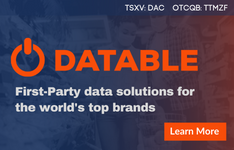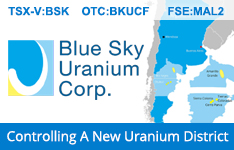Bitcoin is starting to dominate headlines and as it powers higher, investors want to know what exactly does this mean for portfolios. The exploding price of bitcoin has ushered in a new cryptocurrency ecosystem. Investors can draw parallels to the Apple (AAPL) ecosystem, which includes suppliers of parts, retailers that sell hardware, telecom providers of bandwidth, and application developers that create useful utilities. The point is if AAPL did well so did the whole ecosystem of interrelated companies. If it did poorly the results tricked down and they were correlated.
The same thing is happening with bitcoin. There is an ecosystem that surrounds bitcoin and drives innovation and productivity forward. The computer graphics makers like Nvidia (NVDA) that make the CPUs for the mining units have been growing full tilt. Exchanges and money changers like CoinBase and Bittrex have started to see markets develop and in turn spurred the creation of funding mechanisms through Initial Coin Offerings (ICOs). The blockchain is creating new industries and removing the inefficiencies of clearing transactions. All of this is built on bitcoin. The miners play a big part in this ecosystem providing the coins or raw materials for all of it to exist and new innovations in the blockchain technology are fueling the growth in fin tech applications.
Factors Propelling Bitcoin Price Action
Moore's Law states that the number of transistors per square inch of chip doubles every two years. In reality it has been every 18 months. Common sense tells us that exponential growth cannot last forever. According to Investopedia, "Many designers, engineers and computer scientists agreed in early 2016 that Moore's Law may run its course within 10 years. Progress achieving the doubling of the number of circuits has slowed, and integrated circuits cannot get much smaller as transistors approach the size of an atom." Right now, the chips are 14 nanometers (nm) down from 22 nm, which refers to the width of the circuit back in 2011. The next chip they are talking about is the 10-nm chip and then the 7 nm. The new chips are trying to find a compromise between computing power and power usage but the focus seems to be on power consumption. The shift in focus on power use seems to be creating the cracks in Moore's Law but for now it seems to be intact. Regardless of whether Moore's Law is increasing or decreasing, the adoption rate of bitcoin is greater than the rate of technical advancement.


The issue bitcoin miners face is that demand for bitcoin is growing so fast that the difficulty rate is trending higher. When the semiconductor improvements in technology and Moore's Law cannot keep pace with the difficulty level, then price must rise and that is what is unfolding before our eyes. Look at the chart below and you can see that Moore's Law if plotted against difficulty would show technology is not keeping pace with the growth of bitcoin. Moore's Law is essentially the maximum limit of technology. When you add a supply shock to the system like we are having now, then prices rise. Technology suppliers of mining equipment have large backlogs of people trying to buy mining equipment and have resorted to taking bitcoin for payment so that they hedge themselves against the price rise in bitcoin. This backlog is exacerbating the price because only established players who have the bitcoin or upfront cash will get new mining equipment, which is choking out new entrants to the market. The price will only settle when the log jam of people wanting to get into mining thins out. The constrained supply of mining equipment has created a perfect storm for price appreciation.

Top Reasons Why a Crash Is Unlikely
1. Futures Markets
A lot of concern has been voiced about the futures markets and what sort of impact it will have on bitcoin and the markets. In an interview with CNBC, Terry Duffy, chairman and CEO of CMA, said, "Today you cannot short bitcoin. So, there is only one way it can go. You either buy it or sell it to somebody else. So, you create a two-sided market; I think it's always more efficient." Normally you can use market action to gauge the sentiment of the comment. In this instance, the market bottomed short term and has gone on to reach new highs, which was viewed as a net positive.
The futures markets do serve a purpose and have done a great job creating liquidity and allowing asset holders to hedge their investments against catastrophic loss thereby reducing the volatility. The consequence of smoothing out this volatility might hurt its appeal to the masses, specifically the millennials, but on the other hand the CME brings credibility to the asset class allowing institutional ownership. With the planned trading starting in the second week of December, it will be interesting to see how the futures market is able to cope with a 24/7 365 day a year market that has 124 active exchanges, according to coin.market. There are 60 major stock exchanges in the world today that took over 100 years to build.
2. Miner Control
The mining companies not only mine for bitcoin but also manufacture the mining rigs. If investors think about the implications, there comes a realization that these miners can control the supply through pricing and delivery. This is exactly what is playing out in the market right now. Bitmain's founder of the ASIC mining unit also runs AntPool, which is one of the top three mining pools in the world. The suppliers seem to find every reason under the sun not to ship. Finally, when they are ready to ship there seems to be a final round of negotiation on what model they can ship.
There is a backlog of orders for mining equipment and very few suppliers have good reputations. The reason for these delays can be found when you unearth the structural incentive for bitcoin miners to delay. Mining is very competitive and as the difficulty rates keep climbing, a miner's size of reward is correlated to the amount of hashing power it can bring to bear. The current block reward is 12.5 bitcoin, which means the first mining pool to solve the block gets the reward. Typically, the pool with the highest hash rate gets the block.
Earlier this year one of the top manufacturers of mining equipment, BitMain, had a tremendous amount of negative press regarding the "Antbleed" backdoor. The backdoor could have allowed BitMain access to the mining units and shut them down. Bitcoin Magazine contended that this could have shut down 50% of the worldwide hash power on the bitcoin network. According to Steve Rubakh, CEO of Integrated Ventures Inc. (INTV), "BitMain hasn't had anything for sale for cash for 90 days; it's only taking bitcoin and this is forcing the miners to build up coins instead of selling them. What's worse is if you are lucky enough to catch wind of a sale the traffic on the site times you out. These sales are 2–3 hours long and generate $8–10 million." These miners have almost cartel type pricing, which means they have to find a balance between letting new miners get into the market and the games they play with the new units. It's a slippery slope because if the price goes up too fast then more entrants will come into the market diluting their power and control of the market. There is no denying their stranglehold on market.
3. Breadth of Exchanges
Bitcoin is trading on 124 exchanges according to CryptoCoin Charts and traded peer to peer, which makes artificial manipulation much harder to do given this structure. One interesting anecdote is the effect that China had on the market of bitcoin. In early 2014 through early 2017, China had a majority of the daily trading volume doing upwards of 90%. Rumors of Chinese regulation in early September 2017 rocked the markets for fear the demand would evaporate. However, when official news broke of the Chinese regulation in early October banning ICOs and the closure of exchanges, the market had a relief rally. No longer would Chinese rumors dominate wild price moves in the market. Markets did not crash and almost immediately the Japanese miners picked up the slack followed by the U.S. and South Korea. The Chinese moved operations to a bitcoin friendly country.
4. Retailer Acceptance of Bitcoin
Retail acceptance of bitcoin has been relatively slow but is finally starting to get some traction. Overstock (OSTK) was the first retailer to accept bitcoin and they were also the first publically traded stock using Blockchain technology. Expedia (EXPE) is the largest travel portal and allows bitcoin payment for only hotels. Dish (DISH) the satellite TV provider allows bitcoin as well. What's interesting is that both OSTK, DISH, and EXPE have outsources the payment processing to Coinbase. Retail behemoth Amazon (AMZN) has been rumored a number of times to be considering accepting bitcoin but all these rumors have been false.
Miners
Most of the large miners are also manufacturers and very private about what they do. Since most are privately held there isn't much data on valuations because there has been very little publicized consolidation. As a result the list of bitcoin mining stocks is not very large but it is starting to grow. The most notable mentions are:

Riot Blockchain, Inc. (RIOT) which essentially entered the mining market weeks ago with its announcement on November 2, 2017 that is was going to acquire 1200 mining units from Bitmain. It went on to specify that it was going to use hydroelectric power. If you put 2 and 2 together, it is probably going to locate near the Big Thompson Powerplant in Loveland, Colorado. Published residential costs are .097/kWh. Once fully installed each miner should generate $22.53 according to the NiceHash mining calculator. This works out to $473,130/month for bitcoin. For litecoin the profits are $19.65 totaling $351,340 per month. With over $824,470 per month in monthly profit it's not hard to see why the valuation blossomed on this news.
MGT Capital Investments Inc. (MGTI) has a significant mining operation and announced passing the 1000 bitcoin milestone on August 17, 2017, and claims to be one of the largest U.S.-based bitcoin miners. MGTI has 865 units and plans for 170 more in November but it has significant convertible debt and suffers from gross margin but a lot of that is based on ramping up as fast as it can. The company has $3.73 million in equipment at the end of Q3 and has invested heavily in mining equipment. MGT has L2 as a financial partner, which has indicated an equity line of up to $35 million. In addition to the mining, the company is working on commercializing its cybersecurity technology called Sentinel.
Hive Blockchain Technologies Ltd. (PRELF) is a Canadian company with 30% of its stock owned by strategic investor Genesis Mining, which has one of the largest mining centers in the world located in Rejkjavic, Iceland. Hive has ambitious plans to open a $22 million data center in Sweden and seems to be well capitalized with a $7.0 million equity investment from Genesis Mining and $30 million from its private placement. The overall plan seems to be to rapidly scale commercial class mining centers all around the world.
Integrated Ventures Inc. (INTV) just announced the start of operations last week and has 65 units online with additional capacity coming before the end of the year. It has a very clean balance sheet, sufficient operating capital, its own line of mining units, and large space to build out its first data center that is also powered by solar. It also has the highest revenue per market cap, which is roughly 3.5 times cheaper than MGTI. To be on par with MGTI it would grow to a $10.3 Market Cap or roughly $1.25/share.
An honorable mention is Marathon Patent Group (MARA), which recently purchased a small mining operation called Global Bit Ventures. From the chart you will see that it is a decent sized operation. Unfortunately the acquisition of the mining group was extremely dilutive yet a huge opportunity for investors.
Exchanges
One of the oldest known names in bitcoin is BTC S Inc. (BTCS) which has scrapped its business plan of listing products for sale in bitcoin to merging with the Australian Exchange ACX. The merger is contingent on a clean-up of the corporate debt, which appears to be almost completed. When closed the market cap of the reverse merger would be over $100 million. Digatrade Financial Corp. (DIGAF) has been around for 2.5 years as a bitcoin exchange based in Vancouver, Canada. DIGAF has a current market cap of $12.6 million.
ICOs
Social Reality Inc. (SRAX) is having an ICO of its big Token in December and hopes to be the first consumer powered community that dictates how consumers are advertised to. Interest in the ICO is high and looks to be a big success for them.
Price Coupling Beginning
In the past the price movements of bitcoin didn't have a dramatic effect on the stocks in the bitcoin ecosystem. In the past week the noticeable moves in bitcoin were translating into moves in the underlying stocks. In theory the bitcoin miners are similar to how gold mining stocks behave when the underlying commodity has a move. It's not necessarily a dollar for dollar move but the trend can move the entire sector. Mining stock should be the most price sensitive to price movement. Capital equipment suppliers like NVDA are susceptible to a miner's profitability, which continues to soar. Payment processors benefit from an increase in the volume of transactions.
Summary
By now investors should realize that the bitcoin ecosystem is much bigger than one article can address. The central theme is that all these stocks in the bitcoin ecosystem are dependent upon the price of bitcoin. The questions on investor's mind might be how long can this continue, will the bubble burst, and will I be holding the bag. Hopefully it is clear that bitcoin is no longer a fad and was created to appreciate in price which means the law of supply and demand rules. The recent price action reflects the potential of the CME Futures contracts for bitcoin coming in December and the supply shortages of mining units. If investors take these factors and Moore's Law into account, it's not hard to fathom the price increase. Through technology bitcoin has managed to reach even the furthest and most isolated parts of our planet. It's decentralized which means no government has the power to stop it or control it. China certainly tried but the global network is seemingly unstoppable at this point. Bitcoin thrives on distrust of government and its central planning. This is why in the wake of the military coup in Zimbabwe, the price of bitcoin is double the world price. Bitcoin is immune from politics and inherently derives its value from the users and the miners. The reality is blockchain technology is here to stay and basically shows us how we are going to transact with each other in the new digital economy.
Michael Sheikh is the founder of Falcon Strategic Research, which focuses on small-cap and micro-cap companies that are not covered by traditional analysts on Wall Street. Sheikh is an Air Force Academy graduate with a degree in economics; he was a KC-135 pilot. He was a stock broker for Dean Witter and was a research analyst for National Securities, covering the aerospace sector. He is a contract CFO for various public companies.
Want to read more Streetwise Reports articles like this? Sign up for our free e-newsletter, and you'll learn when new articles have been published. To see a list of recent articles and interviews with industry analysts and commentators, visit our Streetwise Interviews page.
Disclosure:
1) Michael Sheikh: I, or members of my immediate household or family, own shares of the following companies mentioned in this article: None. I personally am, or members of my immediate household or family are, paid by the following companies mentioned in this article: None. My company currently has a financial relationship with the following companies mentioned in this article: Integrated Ventures Inc. I determined which companies would be included in this article based on my research and understanding of the sector.
2) The following companies mentioned in this article are sponsors of Streetwise Reports: None. Streetwise Reports does not accept stock in exchange for its services. Click here for important disclosures about sponsor fees. The information provided above is for informational purposes only and is not a recommendation to buy or sell any security.
3) Statements and opinions expressed are the opinions of the author and not of Streetwise Reports or its officers. The author is wholly responsible for the validity of the statements. The author was not paid by Streetwise Reports for this article. Streetwise Reports was not paid by the author to publish or syndicate this article.
4) The article does not constitute investment advice. Each reader is encouraged to consult with his or her individual financial professional and any action a reader takes as a result of information presented here is his or her own responsibility. By opening this page, each reader accepts and agrees to Streetwise Reports' terms of use and full legal disclaimer. This article is not a solicitation for investment. Streetwise Reports does not render general or specific investment advice and the information on Streetwise Reports should not be considered a recommendation to buy or sell any security. Streetwise Reports does not endorse or recommend the business, products, services or securities of any company mentioned on Streetwise Reports.
5) From time to time, Streetwise Reports LLC and its directors, officers, employees or members of their families, as well as persons interviewed for articles and interviews on the site, may have a long or short position in securities mentioned. Directors, officers, employees or members of their immediate families are prohibited from making purchases and/or sales of those securities in the open market or otherwise from the time of the interview or the decision to write an article, until one week after the publication of the interview or article. As of the date of this interview, officers and/or employees of Streetwise Reports LLC (including members of their household) own securities of Riot Blockchain Inc. and Marathon Patent Group, companies mentioned in this article.



























































